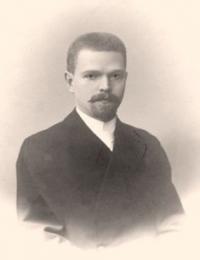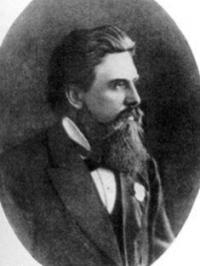You are here
Researchers of Alai ridge.




Trips and tours in the valleys of Kyrgyzstan.
"The mountains disappeared imperceptibly in the distance, and between them and the mountains on the right bank stretched a flat steppe space Alai, merging without borders in the northeast with the horizon..."
Alexey Pavlovich Fedchenko.
Alpine valleys of Kyrgyzstan.
The first researcher to see the Zaalai Range was the famous and talented scientist Alexei Pavlovich Fedchenko, who penetrated the Tengiz-Bai pass, 3,801 meters above sea level, into the Alai Valley, to the Kyrgyz fortress Daraut-Kurgan.
July 20, 1871 A.P. Fedchenko with his wife Olga Alexandrovna, an equally famous Russian woman traveler, climbed the pass. “...The view from the pass made us stop: a panorama of gigantic snowy mountains opened up before us,” writes A.P. Fedchenko about his first impression of the contemplation of an unknown world that opened to him that day.
“These mountains, however, were not all visible from the pass. The nearest ridges partially covered them. Meanwhile, I wanted to see as much as possible, in front of us was a place barely known by the name of Alai, and what lay behind it was unknown to anyone...”
Fedchenko moved on until he saw everything: "The mountains disappeared imperceptibly in the distance, and between them and the mountains on the right bank stretched a flat steppe space Alai, merging without borders in the northeast with the horizon..."
Alai was the possession of the Kokand Khan, and the Kokand authorities did not let Russian travelers into the eastern part of the valley. Together with his wife, the researcher collected an extensive collection of flora and fauna and gave the first description of the Zaalaysky ridge.
He called the highest peak of the ridge in the chain of others the peak of Kaufman. The Pamir expedition of the USSR Academy of Sciences in 1928 renamed this peak climbed by climbers in the same year into Lenin peak and determined its height at 7,129 meters above sea level.
The same expedition gave names to others, until that time the nameless, highest peaks of the ridge: the peaks of Yakov Sverdlov, Tsyurupa, Krasin, Dzerzhinsky, Arkhar, Border guard, Dawn of the East and - between the peak of Lenin and Kyzyl-Agin - the ridge of the Barricade.
Recently, the peak height has been specified: 7,134 meters above sea level. Some other elevations mentioned in the book have also been clarified. - P. L. A few years after the journey of A.P. Fedchenko, in 1876, the military Alai expedition of General Skobelev took place.
Together with the entire Kokand Khanate, Alai was annexed to Russia. Military topographers, having made an instrumental survey of the valley, plotted it on a map; expedition members A.F. Kostenko and V.L. Korostovtsev published the first essays about it. In 1877, Alai was investigated by the geologist I.V. Mushketov, who passed the valley from the mouth of the Koksu River to the Tau-Murun pass.
In 1878, Zoologist N. A. Severtsov and V. F. Oshanin visited Alai. Skassi, a member of Severtsov’s expedition, leveled the valley and for the first time determined the heights of the main peaks of the Zaalaysky and Alaysky ranges.
In the following years, the Alai Valley was studied by numerous geographers, surveyors, geologists, mining engineers, and botanists. Among the most famous researchers were Putyata, N. A. Bendersky, D. L. Ivanov, G. E. Grumm-Grzhimailo, B. L. Grombchevsky, S. P. Korzhinsky, B. A. Fedchenko, N. L. Korzhenevekiy and others.
The colonialist aspirations of world imperialism in Central Asia found expression in the travels of foreigners, among whom there were almost no genuine scientists, most of them turned out to be simply adventurers, agents of foreign intelligence.
The tsarist government, worshiping foreigners, was not limited to providing a pass through the territory of Russia to everyone, but it also provided them with various privileges, which Russian scientists often could not get from the Russian government.
With the help of the tsarist administration and under the protection of Cossack convoys, they passed through the Alai Valley: in 1894 - the Swede Sven Gedin, in 1896 - the Dane Olufsen, in 1903 - the Americans Pempelli and Huntington, in 1909 - the Frenchman Yves, in 1911 - the German Schultz and others.
Almost all travelers of the late XIX and early XX centuries only crossed the Alai Valley and left only its superficial descriptions. Therefore, despite the many mentions of Alai of all those who penetrated the Pamirs, Alai until recently could not be considered well researched.
The first serious scientific work on the Alai glaciation was published in 1918 by D.I. Mushketov, and a detailed geographical study was published in 1930 by the geographer and glaciologist Professor N.L. Korzhenevsky, a long-time Pamir researcher who had completed his tenth since then, since 1903. traveling around Alai.
Authority:
"Traveling in the Pamirs." Pavel Luknitsky. Publishing House of the Komsomol Central Committee, "Young Guard" 1955.







